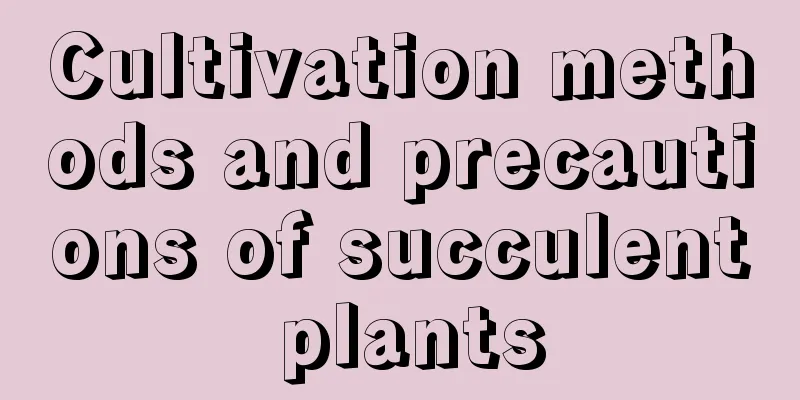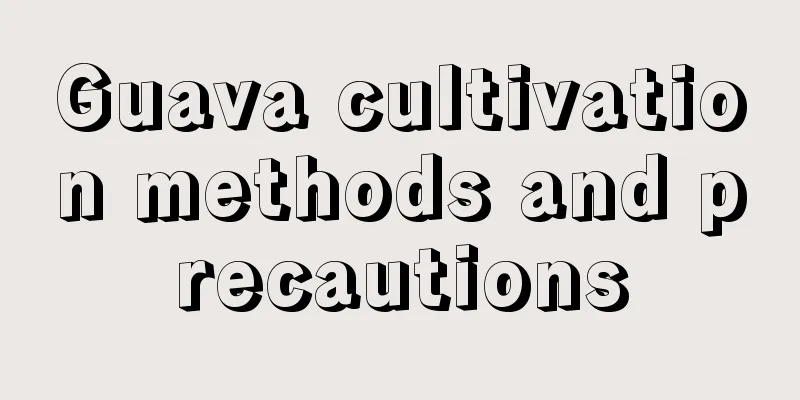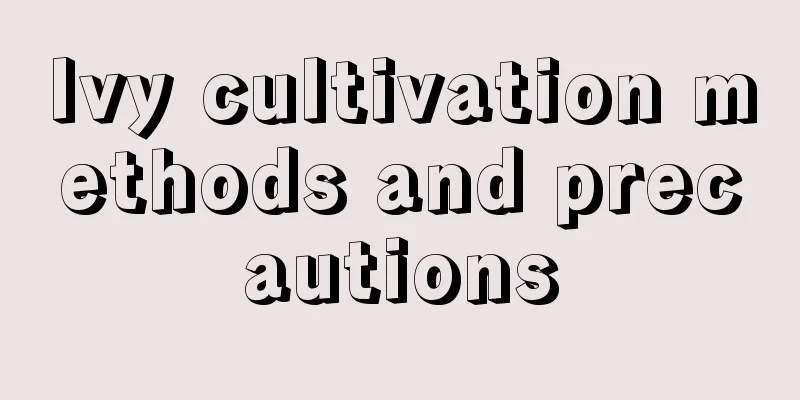Cultivation methods and precautions of succulent plants

|
Succulent plants are not only easy to grow, but also have various shapes and colorful colors. They are an excellent choice for home greening. Many people like to grow them at home. There are many varieties of succulents. Let’s talk about the growth methods and precautions of succulents. 1. Choose the right container The container for growing succulents should be permeable so that the roots can get good ventilation and air permeability. It is recommended to use containers made of ceramic or plastic with good permeability, and avoid using airtight plastic bags or other sealed containers. 2. Suitable soil and potting medium Succulents need a soil that retains moisture and provides adequate drainage. Commonly used succulent soil formulas include peat soil, perlite , vermiculite, etc. At the same time, attention should be paid to the drainage of the potting soil. Some granular media, such as perlite, vermiculite, etc., can be added to the potting soil to increase the air permeability and drainage of the potting soil. 3. Appropriate light and temperature Succulents need plenty of sunlight for photosynthesis. It is recommended to place succulents in a sunny location, but avoid prolonged exposure to strong sunlight. At the same time, care should be taken to keep the indoor temperature stable to avoid excessive temperature differences that may affect succulents. 4. Reasonable watering When watering succulents, you should follow the principle of "don't water unless the soil is dry, and water thoroughly when you do." Avoid overwatering, which can cause root rot. Before watering, you can lightly poke the succulent leaves with your fingers. If the leaves feel stiff, it means the plant still needs water. 5. Fertilize regularly Succulents require certain nutrients during their growth process. During the plant's growth period, apply thin fertilizer once every month. Fertilizers should be specially formulated for succulents, and excessive nitrogen fertilizers should be avoided to prevent excessive plant growth. VI. Pest and disease control Succulents are susceptible to pests and diseases. During the maintenance process, the condition of the plants should be observed regularly. If signs of disease or pests are found, timely measures should be taken to treat them. Common prevention and control methods include spraying pesticides , using biological control and other methods. In short, the correct way to grow succulents requires certain skills and patience. By providing the right growing environment and maintenance conditions, I believe you can grow healthy and beautiful succulents at home.
|
<<: How to plant sage and when to plant it
>>: How and when to prune dianthus
Recommend
Can the red spider lily be propagated by cuttings? How does the red spider lily propagate?
1. Can it be propagated by cuttings? Red spider l...
Cultivation methods and precautions of hydroponic tiger skin orchid
1. Change water on time When it comes to the issu...
Jade soil changing time and method
Jade soil replacement time Generally speaking, it...
The flower language and meaning of Monstera, and what are the taboos when giving it as a gift?
1. Flower language and meaning 1. Main flower lan...
Autumn vegetable varieties and pictures What are the seasonal vegetables in autumn?
The climate in autumn is relatively cool, and aut...
The causes and treatments of yellow leaves of seven-mile olive
1. The temperature is too low 1. Reason: The most...
Hydroponic methods and precautions for garlic
Seed selection First, we need to choose some good...
Breeding methods and reproduction of red jade birds
The ruby bird, also known as the red canary, ...
How to cultivate Asparagus cochinchinensis
1. Soil Many flower lovers think that Aspidistra ...
Can cockscomb be eaten?
Can cockscomb be eaten? Cockscomb is edible and n...
Planting and Management of Cherry Trees
As a popular fruit , cherries always attract many...
How to cultivate jade
1. Maintenance methods 1. Temperature: The most s...
What to do if you accidentally overwater succulents (Is it okay to overwater succulents?)
Most species of succulents are native to arid are...
Do you know everything about flowers in March?
Flower affair Prune potted forsythia, plum blosso...
Common varieties of fuchsia
Fuchsia grandiflora The tube of the plant is deep...









